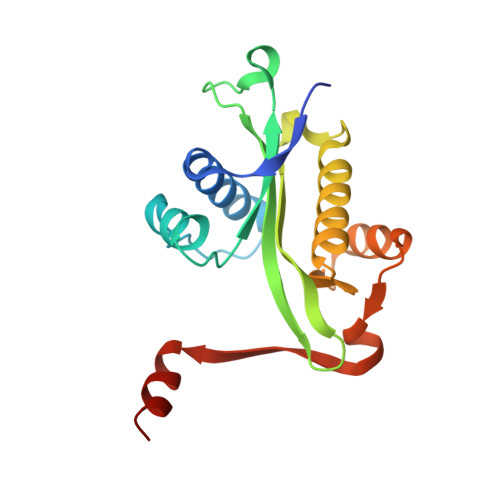Mechanistic and Structural Analysis of Human Spermidine/Spermine N(1)-Acetyltransferase.
Hegde, S.S., Chandler, J., Vetting, M.W., Yu, M., Blanchard, J.S.(2007) Biochemistry 46: 7187
- PubMed: 17516632
- DOI: https://doi.org/10.1021/bi700256z
- Primary Citation of Related Structures:
2JEV - PubMed Abstract:
The N1-acetylation of spermidine and spermine by spermidine/spermine acetyltransferase (SSAT) is a crucial step in the regulation of the cellular polyamine levels in eukaryotic cells. Altered polyamine levels are associated with a variety of cancers as well as other diseases, and key enzymes in the polyamine pathway, including SSAT, are being explored as potential therapeutic drug targets. We have expressed and purified human SSAT in Escherichia coli and characterized its kinetic and chemical mechanism. Initial velocity and inhibition studies support a random sequential mechanism for the enzyme. The bisubstrate analogue, N1-spermine-acetyl-coenzyme A, exhibited linear, competitive inhibition against both substrates with a true Ki of 6 nM. The pH-activity profile was bell-shaped, depending on the ionization state of two groups exhibiting apparent pKa values of 7.27 and 8.87. The three-dimensional crystal structure of SSAT with bound bisubstrate inhibitor was determined at 2.3 A resolution. The structure of the SSAT-spermine-acetyl-coenzyme A complex suggested that Tyr140 acts as general acid and Glu92, through one or more water molecules, acts as the general base during catalysis. On the basis of kinetic properties, pH dependence, and structural information, we propose an acid/base-assisted reaction catalyzed by SSAT, involving a ternary complex.
- Department of Biochemistry, Albert Einstein College of Medicine, 1300 Morris Park Avenue, Bronx, New York 10461, USA.
Organizational Affiliation:

















